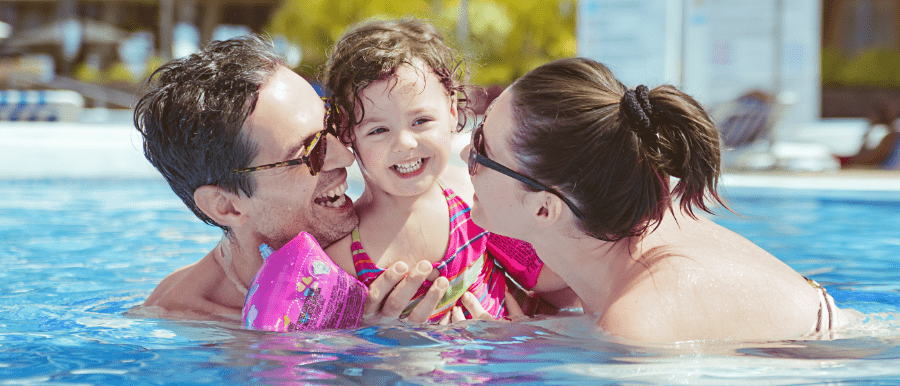
Why can drowning occur at a public swimming pool?
Many people mistakenly believe that once they enter a swimming pool, the responsibility for their child’s safety is transferred to the lifeguards. This is not the case – lifeguards are not babysitters! Some parents also believe that other parents will keep an eye on their child. Every parent/guardian is responsible for the safety of their child. A lack of direct supervision by a parent or carer is believed to be a contributing factor in 70% of all drowning deaths at public pools across Australia.
What is the role of a pool lifeguard?
The role of the lifeguard in a public pool facility is to oversee the safe running of the facility and ensure all patrons can safely enjoy their time. Some of a lifeguard’s responsibilities include posting warning signs, establishing and enforcing safety rules, cleaning and clearing pool decks, and providing basic first aid. Often, lifeguards perform these responsibilities for hundreds of patrons at a time, so it is vital to always supervise your own child while at the pool.
What is active supervision?
Active supervision means maintaining constant visual contact with your child, and, for children 5 years and under, being within arm’s reach at all times. It is not glancing up occasionally while checking emails or scrolling through Facebook, popping to the kiosk for a coffee or snack, chatting or reading a book. Parents and guardians should actively supervise their children at all times and always be ready to enter the pool.
Active supervision at public pools consists of four key elements:
- Be Prepared: Ensure you have everything you need before getting into the water, such as towels and dry clothes.
- Be Close: Always be within arms’ reach of your child.
- All of Your Attention: Focus all of your attention on your child and get into the pool and talk and play with them.
- All of the Time: You should never leave your child alone in the water, nor should they be left in the care of an older child or with the assumption that your responsibility diminishes due to the presence of lifeguards.
For 0–5 year olds and non-swimmers
A parent or carer must be in the water at all times and within arm’s reach of the child. It is best if you are engaging with your child i.e. playing with and talking to them.
For 6–10 year olds
Constant active supervision is required for children aged 6–10 years old. Parents and carers must be prepared to enter the water with this age group and maintain constant visual contact.
For 11–14 year olds
It is recommended that parents regularly check on their child by physically going to where they are in or around the water.
What can I do to make my trip to a public pool safer?
Always obey any instructions the lifeguards give you and follow the advice on any signs around the pool. When you visit the pool, you can expect to safely enjoy your time. If people are being disruptive, using foul language or engaging in unruly behaviour, speak to a lifeguard who can put a stop to this behaviour.